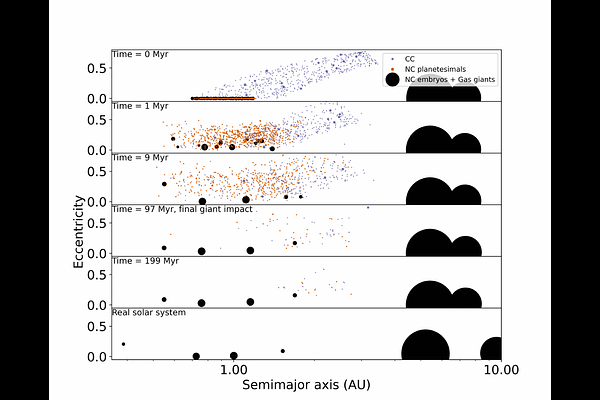Dynamical origin of Theia, the last giant impactor on Earth

Dynamical origin of Theia, the last giant impactor on Earth
Duarte Branco, Sean N. Raymond, Pedro Machado
AbstractCosmochemical studies have proposed that Earth accreted roughly 5-10% of its mass from carbonaceous (CC) material, with a large fraction delivered late via its final impactor, Theia (the Moon-forming impactor). Here, we evaluate this idea using dynamical simulations of terrestrial planet formation, starting from a standard setup with a population of planetary embryos and planetesimals laid out in a ring centered between Venus and Earth's orbits, and also including a population of CC planetesimals and planetary embryos scattered inward by Jupiter. We find that this scenario can match a large number of constraints, including i) the terrestrial planets' masses and orbits; ii) the CC mass fraction of Earth; iii) the much lower CC mass fraction of Mars, as long as Mars only accreted CC planetesimals (but no CC embryos); iv) the timing of the last giant (Moon-forming) impact; and v) a late accretion phase dominated by non-carbonaceous (NC) bodies. For this scenario to work, the total mass in scattered CC objects must have been ~ 0.2 - 0.3 M$_{\oplus}$ , with an embryo-to-planetesimal mass ratio of at least 8, and CC embryos in the ~ 0.01 - 0.05 M$_{\oplus}$ mass range. In that case, our simulations show there are roughly 50-50 odds of Earth's last giant impactor (Theia) having been a carbonaceous object - either a pure CC embryo or an NC embryo that previously accreted a CC embryo. Our simulations thus provide dynamical validation of cosmochemical studies.